***HEALTH*** Why we drink milk from these happy cows / RAW MILK: the Dangers and Benefits
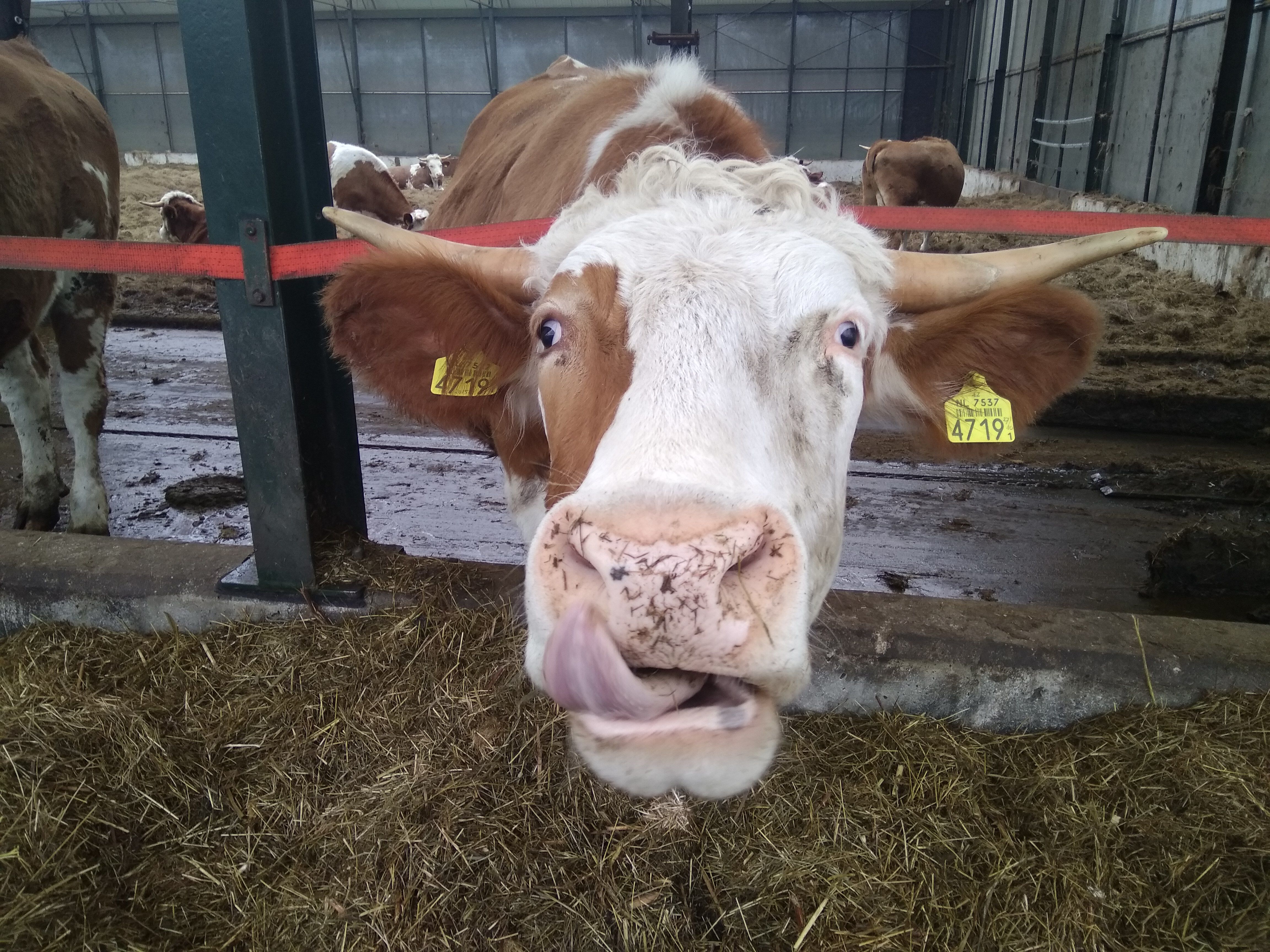
Hoeve Biesland
We live in the center of Rotterdam, so driving out of town always takes some time. But once a week or maybe once in 10 days, we take our empty bottles and make the 30 minute journey to this farm on the outskirts of Delft. 'Hoeve Biesland' - a farm with a big bunch of happy cows, vegetables grown in their own gardens, and a cute little shop where they have organic and biodynamic products for sale.
So why do we make these regular trips, what is so special about Hoeve Biesland's products that we don't go somewhere closer instead?
This post is to share with you what I love about and take away from this farm.
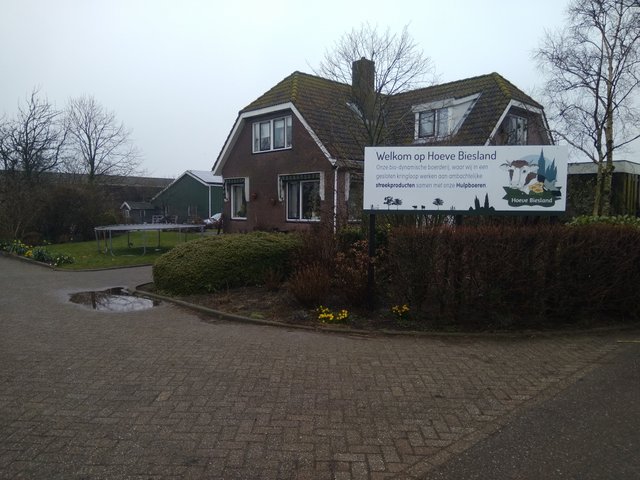
Raw milk
The number one reason we go to this particular farm is for the milk they sell, the raw milk, which we can tap from a big container right after it has been collected from the cows. So, the milk has not been pasteurised or heated in any way, before we take it.
Raw milk - isn't that dangerous? Why would it be any better than 'regular' milk?
Let me share some information which may give you a different perspective on raw milk and what it means to us.
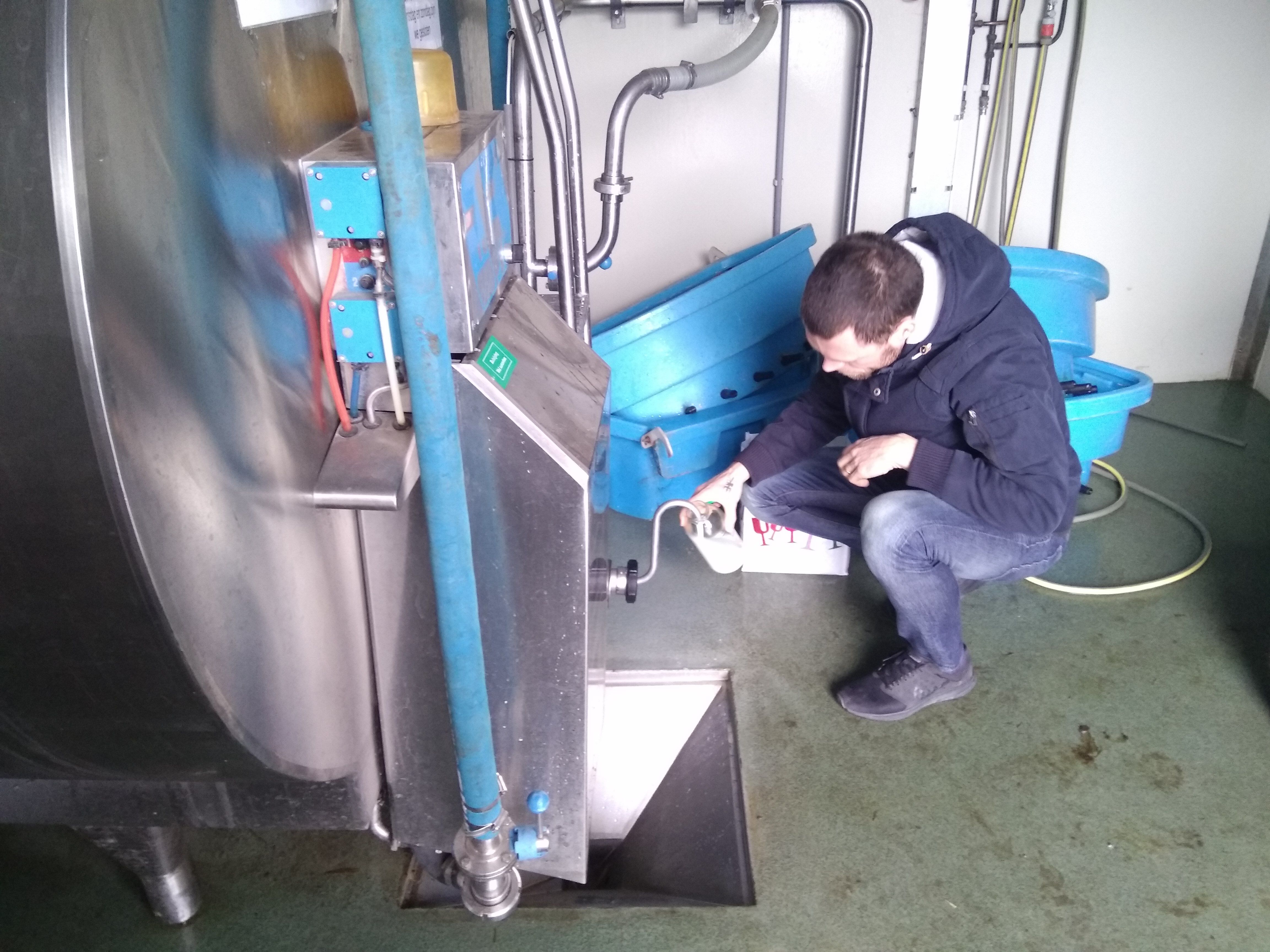
Dangerous?
If you're new to the idea of raw milk, your first thoughts might be on hygiene, bacteria and the need for heating milk to make it safe.
How dangerous is it really to drink your milk raw?
In the US, around 24.000 people get sick from something they've eaten, every year. Milk, raw and/or pasteurised, is at the very bottom of the list of products that cause disease. You are 1,5 times more likely to get sick from eating shellfish, than from drinking raw milk. It is even more likely for you to die from eating raw oysters, than it is for raw milk to make you sick (not dead). And getting sick includes anything, from some increased stomach sensitivity or diarrhoea to getting seriously ill and being hospitalised. So how much chance is there of you getting hospitalised by drinking raw milk? 1 in 6 million. Meaning, it is 750 times more probable for you to die in a car crash than for you to be hospitalised (not die) from drinking raw milk. In this article, Chris Kresser gives these and other facts about the danger of drinking milk raw, and it really makes you reconsider your doubts.
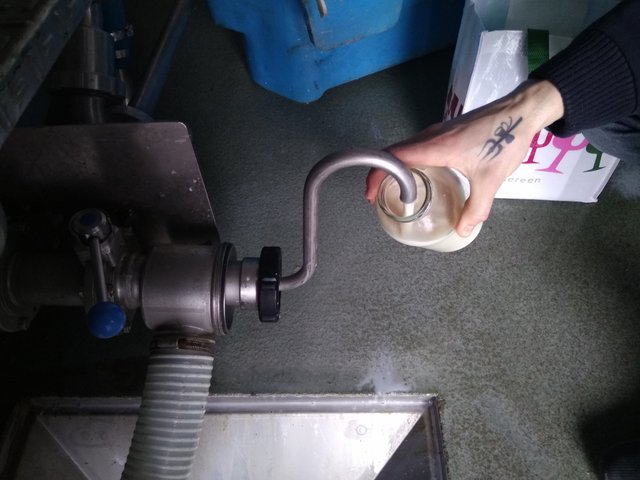
Benefits?
We might need more reason for drinking raw milk, than just realising it isn't as dangerous as we thought. What are the benefits of drinking your milk raw?
Milk contains so many things which we need for our health - vitamins, minerals, proteins, the right kind of fats, enzymes. And it contains all that in the right combination for our body to be able to break it down and benefit from it. When milk is being heated, it changes the structure of the proteins and the enzymes are no longer (or a lot less) active. Heating the milk changes the synergy of and takes out the life from the milk. For children, raw cow milk can help in a same way mother milk helps to build our natural defence mechanisms, even aiding them to overcome allergies and asthma related problems.
This and other information about raw milk comes from a book I read a few months ago (and that I also mentioned in a post about fermented vegetables), called 'Weet wat je eet' (not published in English, but translates something like Be Aware of What You Eat').
Some facts from 'Weet wat je eet' about why to drink raw milk:
- Raw milk is a living product, pasteurised milk has become dead. Pasteurised milk rots or goes mouldy when it grows old. Raw milk goes sour, like when we use milk for making yoghurt, which is a natural process of fermentation.
- The heating process of pasteurised milk kills the enzymes and bacteria which actually support your body in the digestive process. This makes heated milk (72 degrees Celcius for regular and 138 for long life milk) more of a burden on our immune system and is more prone to causing allergies. Daan de Wit goes as far as to say that many people who think they have a lacto-intolerance, might actually be having a pasteurised milk intolerance.
- In 2010, a Canadian farmer (Michael Schmidt) does an experiment where he raises one calf on raw milk and one calf on commercially bought milk. The differences between the two animals as they grow is stunning. After eight weeks, the first calf (also eating grass by this time) has a bad looking coat, smaller testicles, doesn't respond properly and weighs 115 kgs, where the raw milk calf is healthy and weighs 200 kgs. After 5 months, the animals' organs are analysed. The raw milk calf has a solid, green stomach contents, the pasteurised calf's stomach is filled with blackish, stinking muck. The manure of the raw milk calf was fine, the pasteurised milk calf had runny manure, with a greyish, whitish colour. For pictures and more details read more here.
Quality
Raw milk might be more healthy than regular, commercial milk. But is all raw milk the same? What matters most for the quality of milk?
In analysing the qualities of milk and raw milk specifically, Daan de Wit mentions that the milk a cow produces is very much dependent on the food the animal eats and the way the cow is being treated. Grass is much better than corn for having the right kinds of fat in your milk (less omega 6, more omega 3, but that is material for another post). And the horns of a cow are a storage place for minerals, which it uses while ruminating to digest grass. When the horns are removed from the cow, the only other storage place it has for minerals are its hooves. Many cows have issues with unhealthy, depleted hooves exactly because they are missing their horns.
On this topic, Daan de Wit quotes a farmer from Netherlands who has his cows feed on grass and herbs naturally present in his meadows, who lets them keep their horns, who hasn't needed to use antibiotics on his cows since 2004, and who wins a lot of prizes in Netherlands for making the best quality cheese. They have a lovely website, for those who can read Dutch, with this article telling more about the farm's raw milk and the products they make from it.
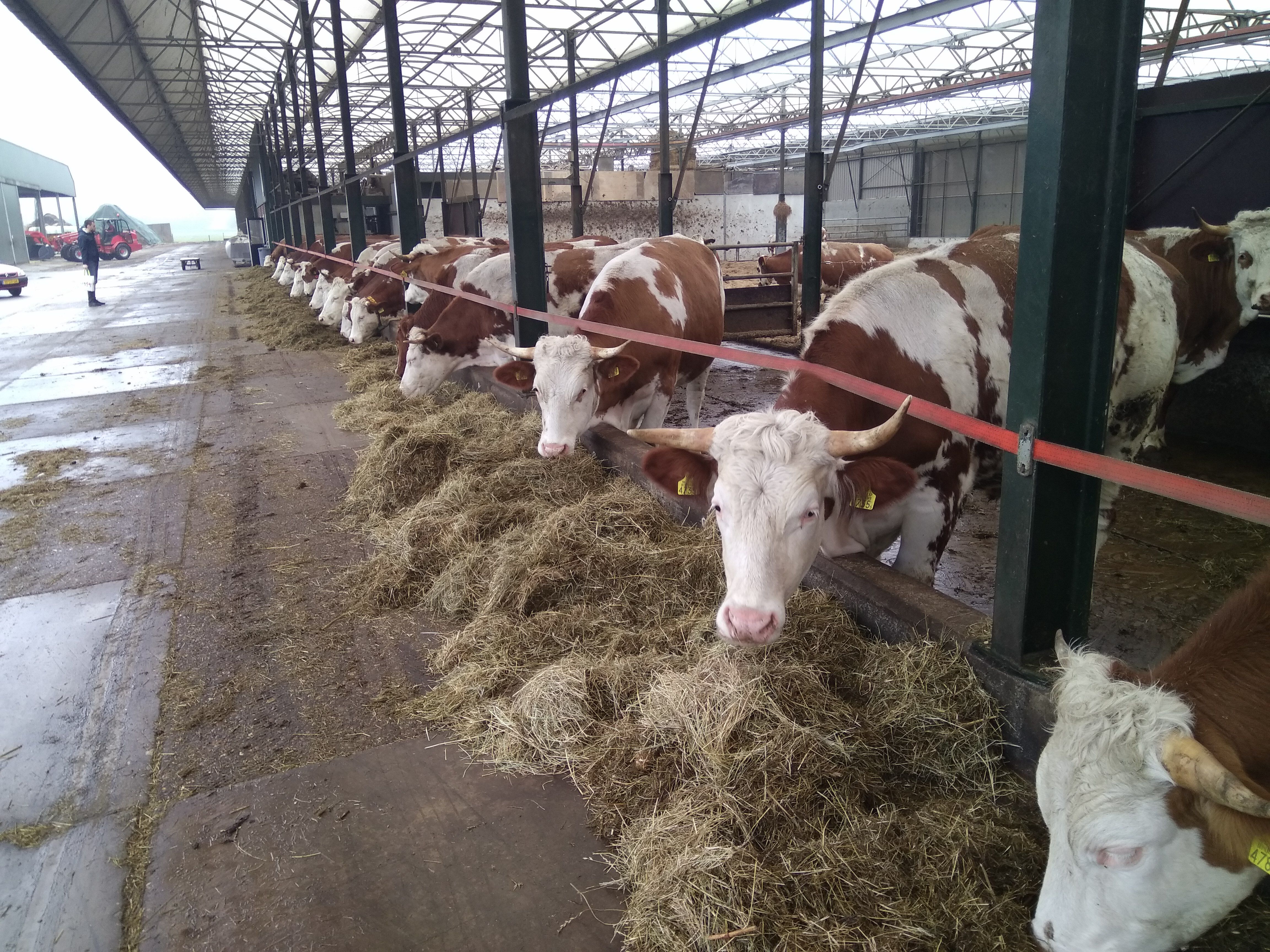
For me, I've been convinced. I've never had any healthy issues from drinking raw milk, the taste of it is awesome and I love seeing the cows at Hoeve Biesland healthy and happy, realising that these sweet animals are supporting my health and happiness also.
If you like to know more on the topic, a lot of great research has been done by a dentist gone researcher Weston Price, work that is now being presented by the Weston Price Foundation. Here's their take on why to quit drinking commercial milk and switch to natural milk instead.
Eggs
As I said, the milk is the number one reason we go to the farm. Reason number two are the eggs. Which are also local, biodynamic and great in taste and quality.
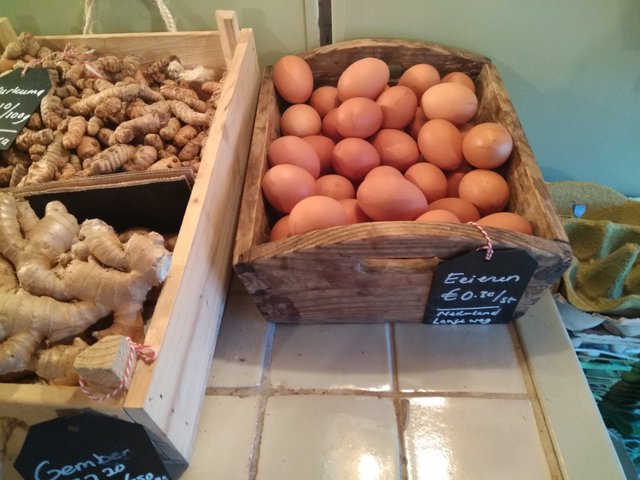
The eggs are being sold in the small shop on the farm's compound, called 'De Weilandwinkel' (The Meadow Shop). What I really love about it, apart from the quality of their products, is that they sell their products at really great prices. If we buy 1 litre organic milk from the supermarket (just organic, not even biodynamic), the price will be around 1,50 euro's. At the farm, we buy it for 90 cents per litre!
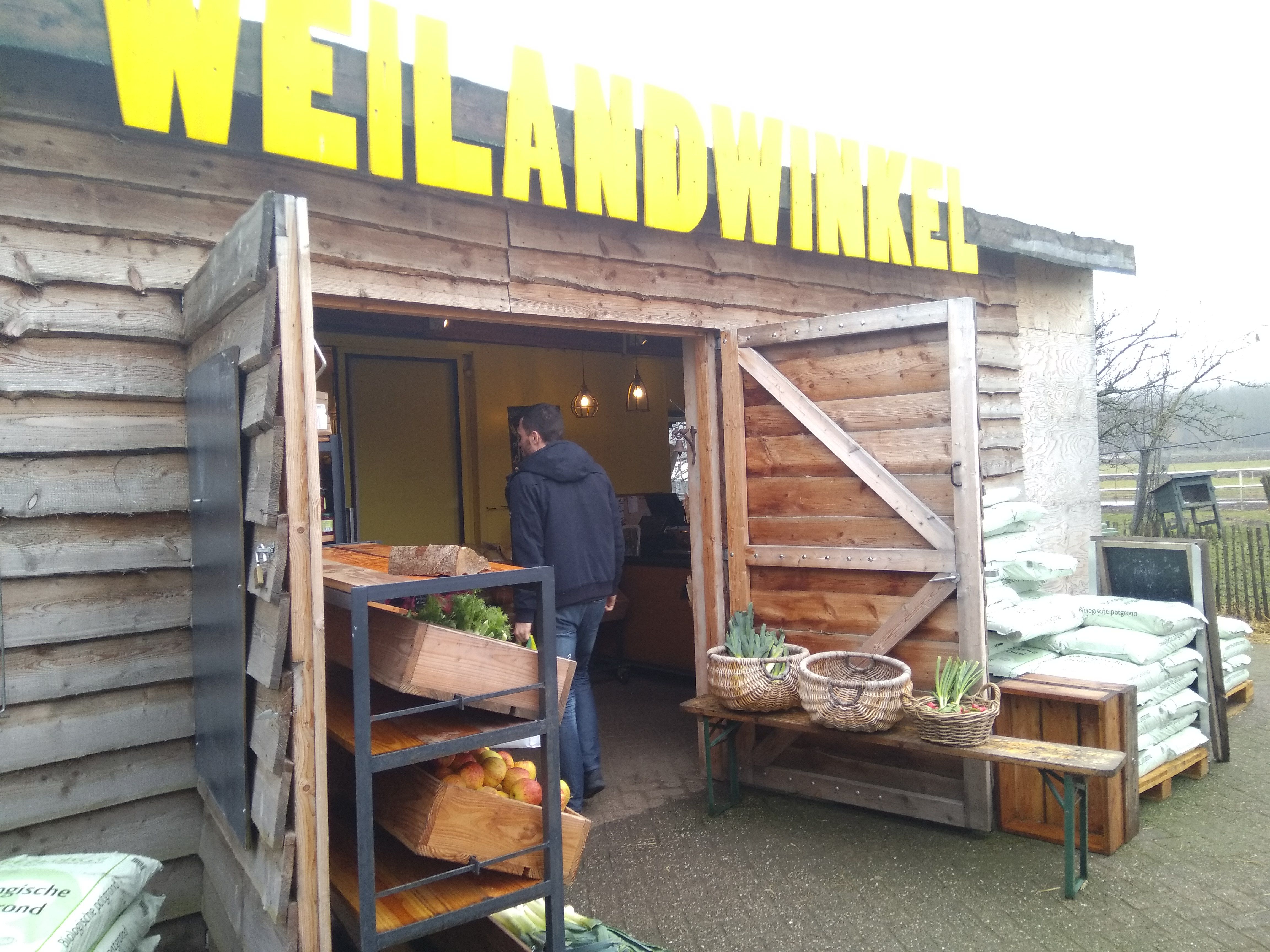
The eggs we buy at the grocery store are close to 40 cents a piece. We have a system in Netherlands with stars, where three stars tells the chickens are having a happy life, get to go outside, get the best food and all. So we buy the 3 star eggs. At the farm, the eggs are 30 cents a piece, and I'm positive they get the best care because I can actually go and visit those little chickens myself :).
Extra's
At the store, they also sell vegetables and home made bread, and other stuff like honey and cheese and jam and juices, all high quality products from farms in the area who take great care of the animals and the environment. I really love taking a look, however the prices of those products tend to be a bit high. Which makes sense, but just means we don't buy those as often.
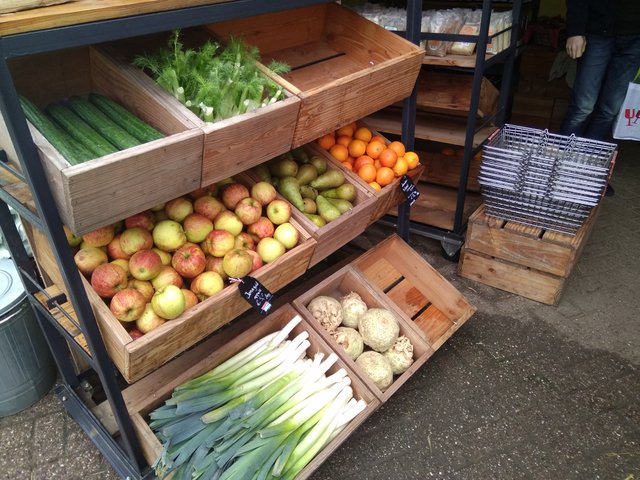
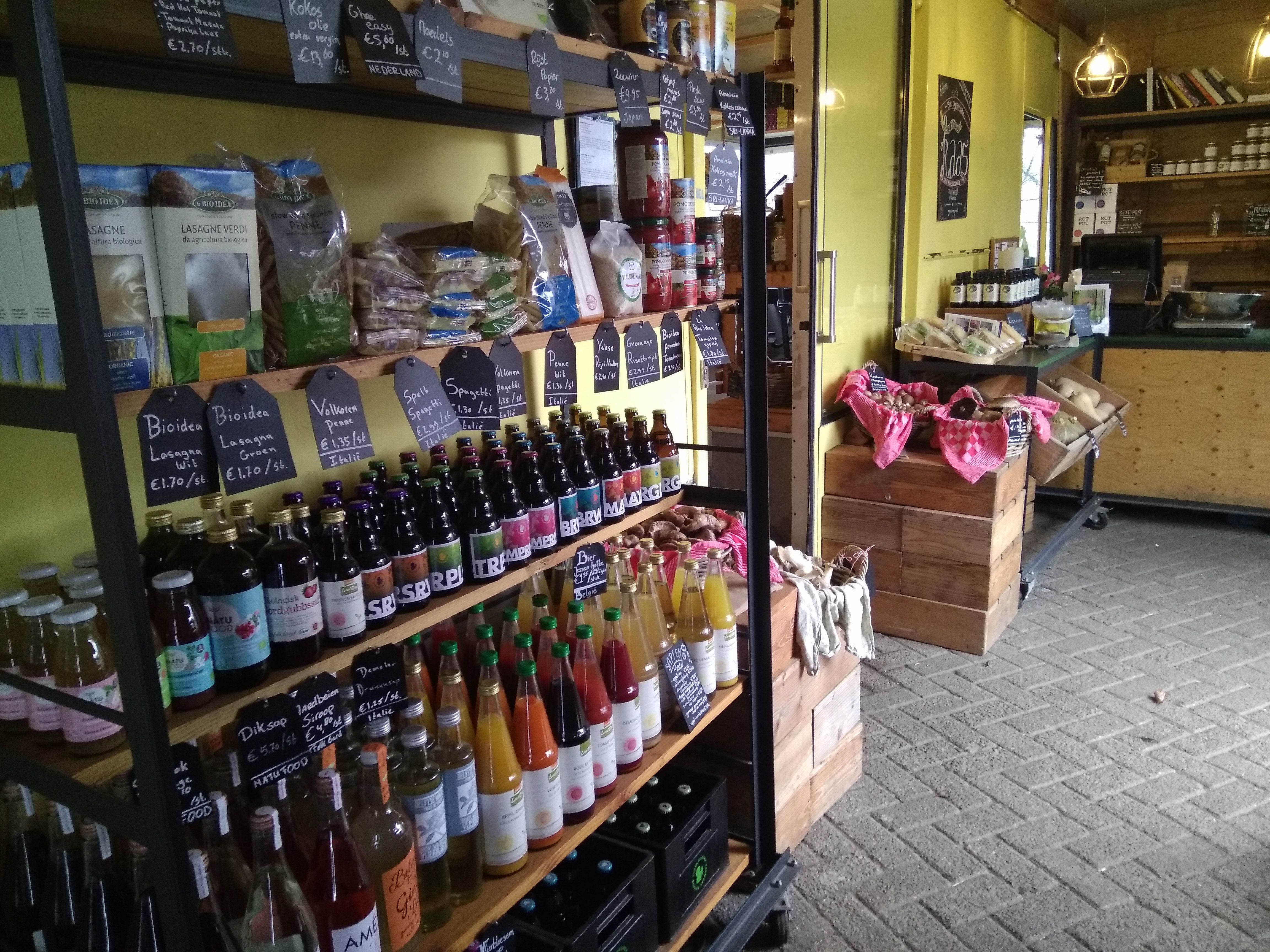
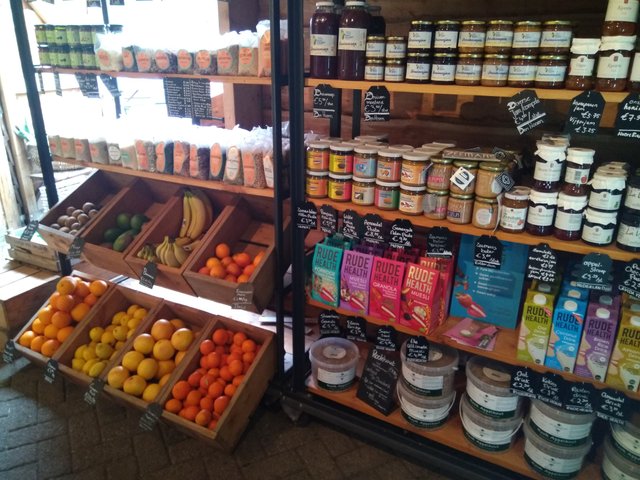
This week they had super fresh and tasty looking bunches of purslane for sale, so we took those to make soup for lunch.
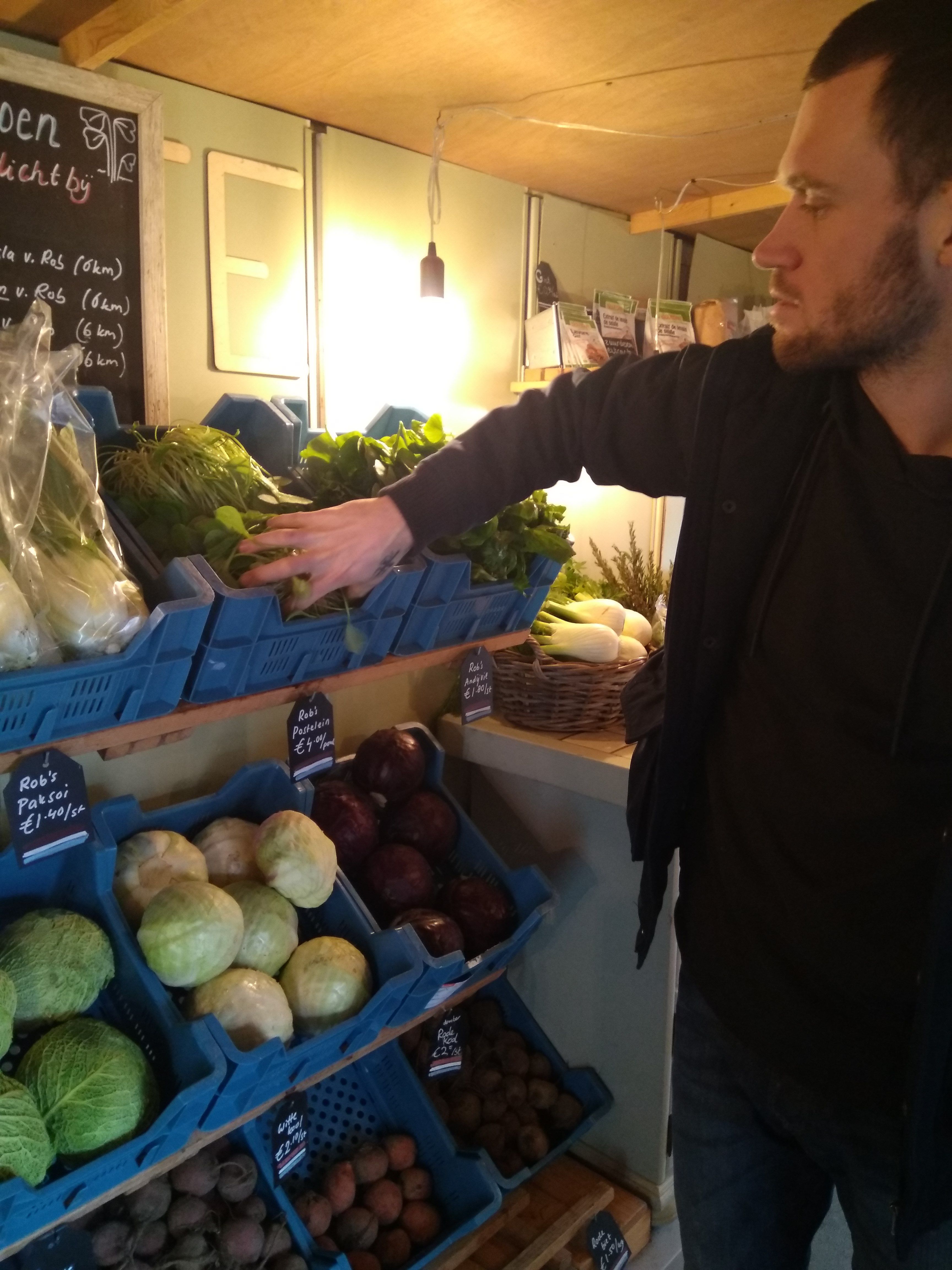
Going home
I always leave the farm feeling satisfied. The whole place breathes an atmosphere of quality and friendliness. We take our bottles of milk and the eggs and some veggies and it makes me feel grateful towards nature and all the ways that it supports us.
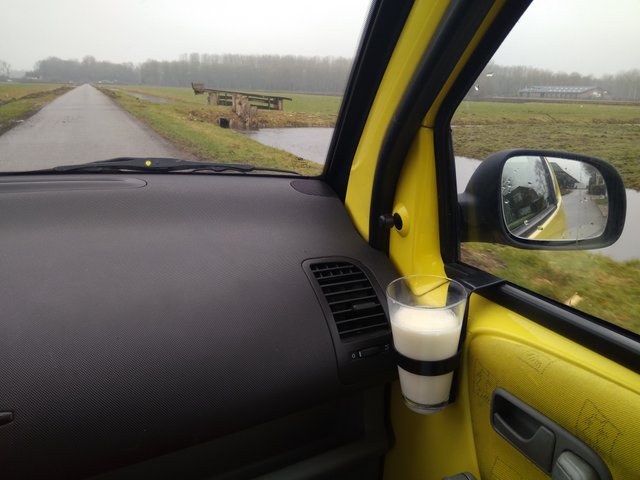
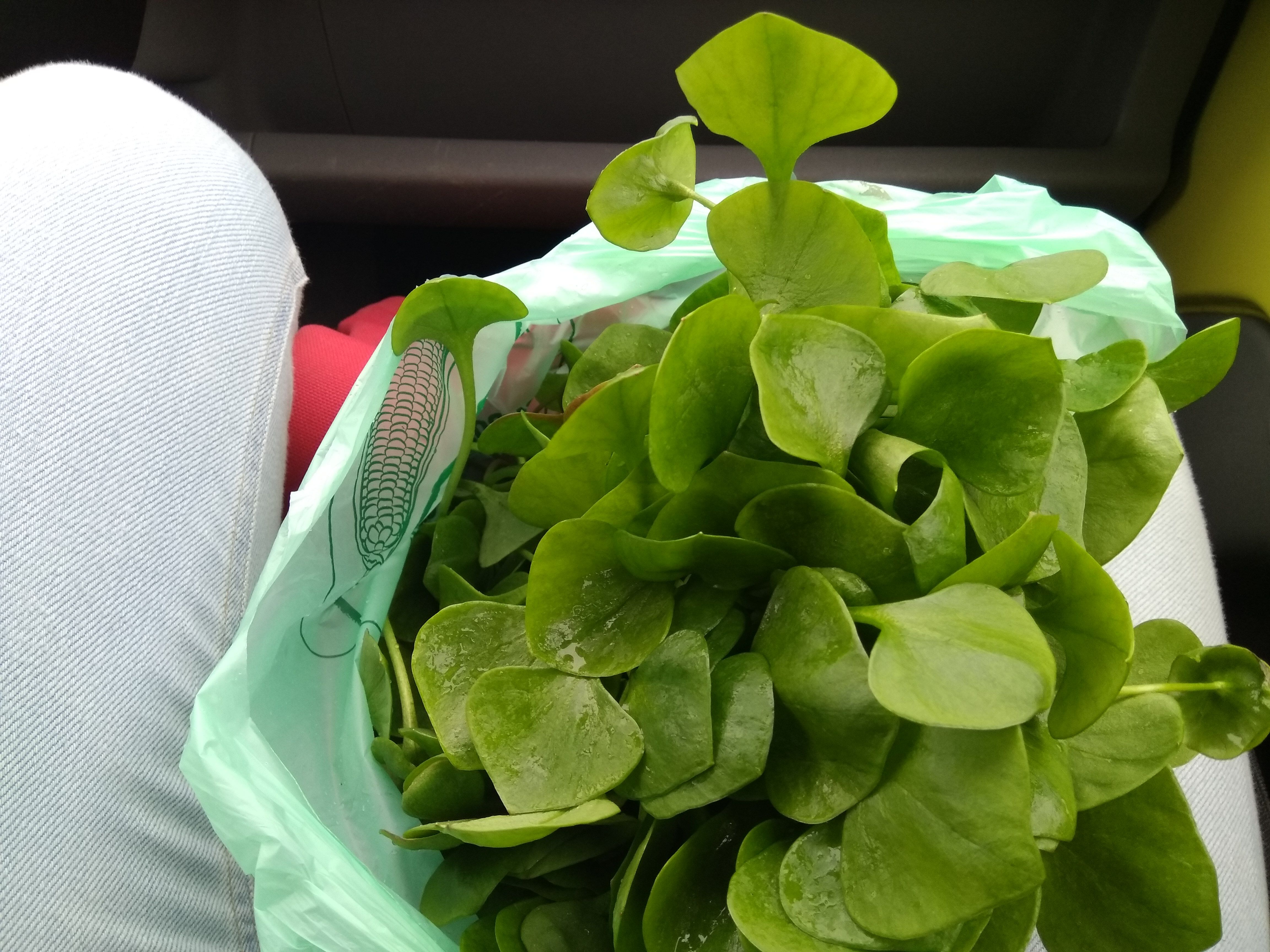
Once we got home, I started putting this post together and my husband made soup from the purslane, which turned out very tasty. And healthy too! Did you know purslane is full of omega 3 fatty acids, fibers, vitamins and minerals? Of course, you can't exactly taste all of those. Still, knowing they are there in my soup makes me enjoy it even more ;).
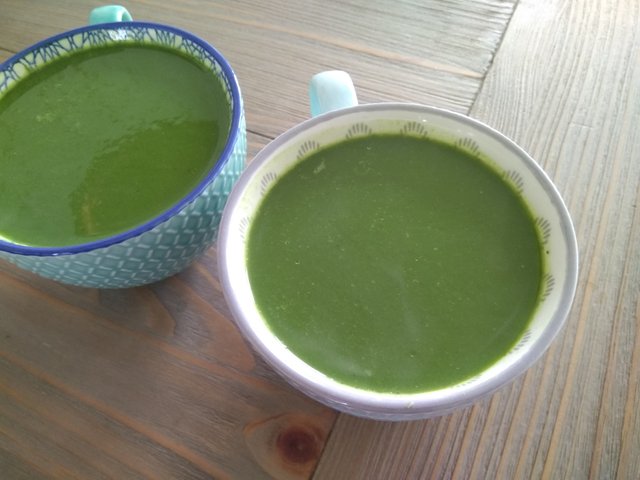
Big thanks to all of you for reading this post, and for your upvotes and comments! I hope this post will make a bit of a difference for reconsidering what you eat and drink. Especially when it comes to milk! Wishing you health and happiness!
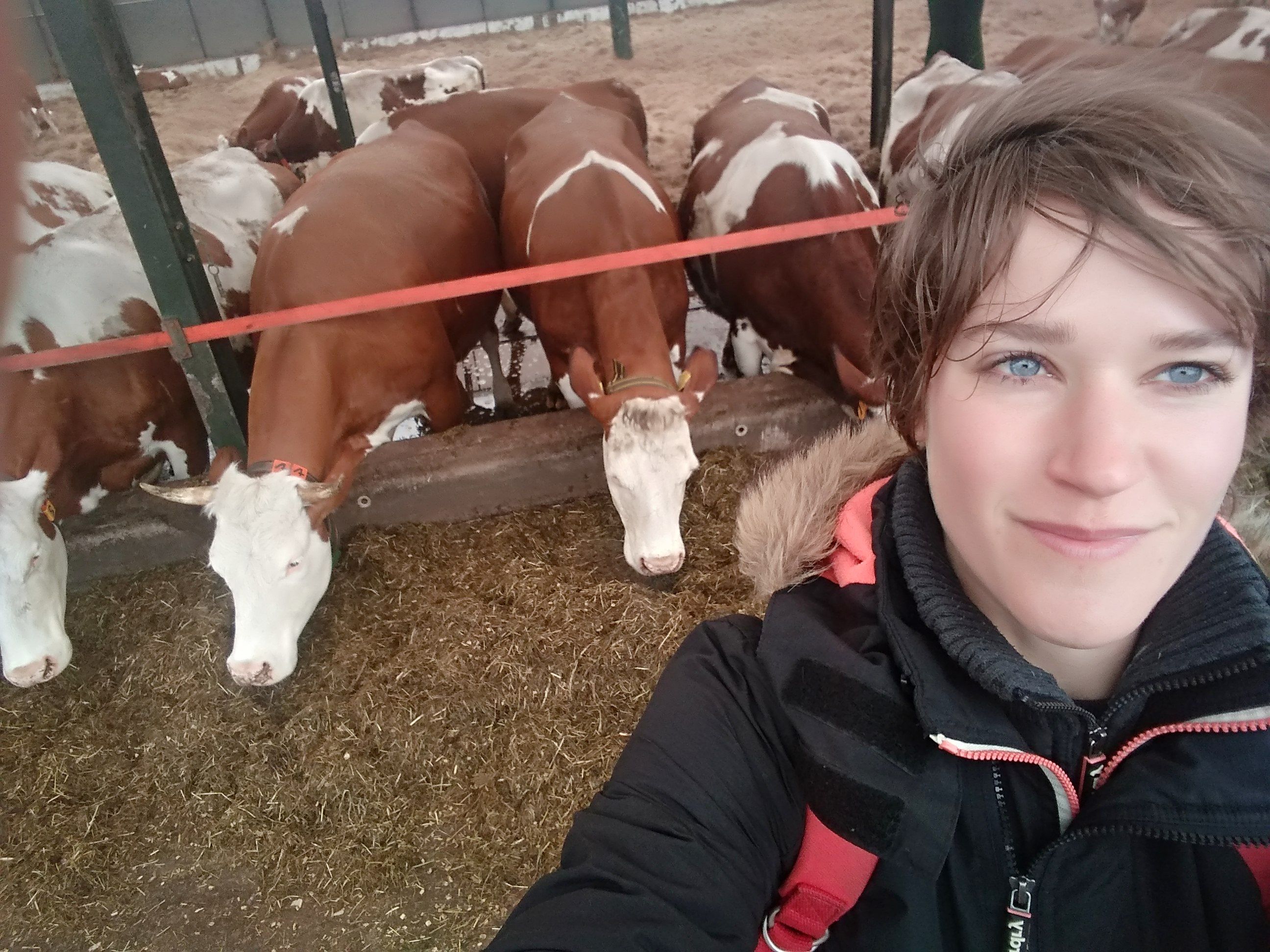
Love this post :) Following!
Thanks!!! :)
Que hermosos lugares,en mi país Venezuela tomamos leche cruda siempre que sepamos que las vacas están sanas ,yo desde niño he tomado leche cruda al principio da diarrea luego te adaptas y si es mas sabrosa.En un pueblo llamado Taguay al sur de Aragua se producen los huevos de las gallinitas felices desde hace mas de 18 años,es hermoso compartir esta experiencia y como esa hay mas mis amigos de los países bajos aquí estamos compartiendo con ustedes y los seguiremos.Saludos con cariño,vitalidady muuucha salud
Thank you! It's great to know how the animals you drink the milk from or eat the eggs from, are healthy and well taken care of, right? For the sake of the animals of course. But for our personal sake also - their health and happiness will always translate in those products!
Todo bien seguiré sus interesantes relatos.Saludos con cariño
Thanks for the post, you have inspired me! Sadly, I live in one of 7 states where raw milk is still illegal for human consumption, but it is legal for our pets!!! So I'm gonna go look for some raw milk "for my dog"
Raw milk illegal? That IS sad. Hope you both will be able to enjoy it soon! :)
Nice post @amritadeva!
I personally haven't drank milk in a really long time. The thing is, the milk I have access to is the commercial non sense which I think creates a lot of mucus in the body.
However, I too buy really healthy eggs in China. The commercial eggs you buy here are not good. They are full of hormones and are from poorly raised chickens. Instead, there are markets very close to my apartment where I can buy eggs from chickens that live on the mountain tops here. They are called "Qinglong Shan Ji Dan". Qinglong is the name of a rural county in the northern part of my city and Shan Ji Dan means "mountain egg". The eggs are smaller than the conventional eggs, but the shells are stronger and the yolks are a darker orange colour. They taste a whole lot better and they are not expensive! I just fill up my shopping bag with around 30 eggs and it costs me about $8. I don't even know the actual price of them (per 500g) lol.
Thank you!! Yes, bad quality milk - I really do believe it will do more harm than good. Like so many of the products we get from commercial stores, which have been treated to last longer and to give the customer a the exact same product experience every time, which have lost all their nutritious value and only clog our body... Better choose to eat what we know is healthy and from a good source.
The chickens and their 'mountain eggs' sound awesome! We didn't eat eggs for many years, the time we lived in India and before that too. Now we're enjoying them again, and I simply love them :).
People who buy pasteurized milk then go buy yogurt "with live cultures" crack me up... I drive about 15 minutes once a week to get my raw milk. The drive is down a country road with stunning views. I buy it there on the farm, I can see exactly how the animals live and are treated (like royalty!) Totally with you, REAL food is the only way to eat.
The yoghurt example, lol :). I think a lot of awareness about what food is and what it means for our bodies, has gone lost. But knowing what really feeds our bodies and then also supplying that to ourselves is a very grounding and fulfilling experience, I'd say. Same as being around the animals (and land, for that matter) which provide that food, and knowing they are being cared for with love and respect. 15 minutes with stunning views is great for getting your fresh supply of raw milk!